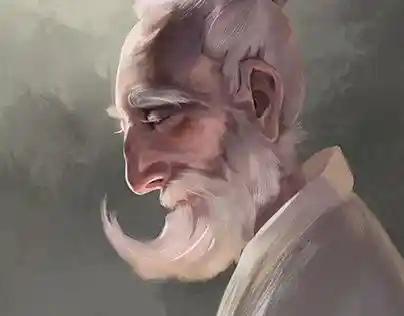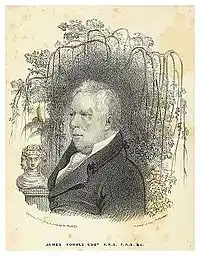A British Official who Found his Muse in India: James Forbes
James Forbes was a clean slate when he arrived in India as a young and aspiring artist. It was the conspiracy or the grace of destiny that made him complete as his soul merged with the natural beauty and culture of India and his world wasn’t the same anymore. India became the source of his imagination, his inspiration, his muse, and his artistic skills was flowing. This is the story of a British officer who loved and admired India for what she truly was.

A man musing, Source: Pinterest
Many foreigners come to India. Similarly, many did in the past, as a part of the colonial regime but they never accepted India in their hearts. Within their soul, India was merely a working place, a work to be done with, no impersonal longings should be attached to a country that alienated the Britishers to the core of their pores. Everything about this country was peculiar yet refreshing in a way.
While some opened their inner eye and embraced India for its very wondrous differences, others just turned a blind eye, calling India an uncivilised country of illiterate savages. It all depended on the perspective and the willingness to mix in. This is the story of a British man, a budding artist who found his muse in India, writing and painting extensively about the rich flora and fauna of the country. This is the story of James Forbes, a writer who worked as a part of the British East India Company for a long period of 17 years while he was a resident of India. Within this long and odd period, Forbes fell in love with the alluring charm of India.
Forbes belonged to a Scottish family and was born in 1749. In 1765 when he was a young man, an aspiring artist, and a writer by profession. He landed a job with the British East India Company and was posted to a small town in Bihar. His job was to write and research India to strengthen the British hold over the country. Forbes did exactly that but while he was doing his job, he found himself indulging in the abundance of flora and fauna that India has to offer for his eyes to draw and research.
Forbes travelled extensively throughout India studying the biology and zoology of every state. In 1781 he visited the Taj Mahal and the monument’s charm mesmerised him so much that instantly he set to draw it, becoming the first European to draw the Taj Mahal. The place where Forbes was posted has now been named after him as ‘Forbesganj*’*, in honour of the man who lived in India with the heart of an Indian, sharing and caring about the country genuinely rather than just as a work motive.

James Forbes in the cover of his book, Source: Google Images
When Forbes’s residency finally ended and he returned to England, India was still in his heart. Day and night he started feverishly revising his 52000-page manuscript of all his documentation about India and published it as ‘Oriental Memoirs’. This text also had his extensive research experiences of South Africa and other countries he was posted to. But India remained the most memorable and heart-touching for him.
As a part of his job, Forbes also wrote many defensive political and socio-cultural manifestos in favour of Hindus’ conversion to Christianity. After all, one cannot forget that despite his deep attachment to India, he was still a staunch coloniser at heart, who admired India as one admires birds trapped in a cage.
But Forbes personally never harmed anyone and he was neither interested in politics nor had any agency to make vital decisions, he was just a writer voicing his opinions. That’s why history hasn’t been harsh to the memory of James Forbes, and that’s why Forbesganj hasn’t been renamed because it personifies and preserves the legacy of a passionate man who found artistic potential in India. For that, Forbes will always be remembered, with respect.


